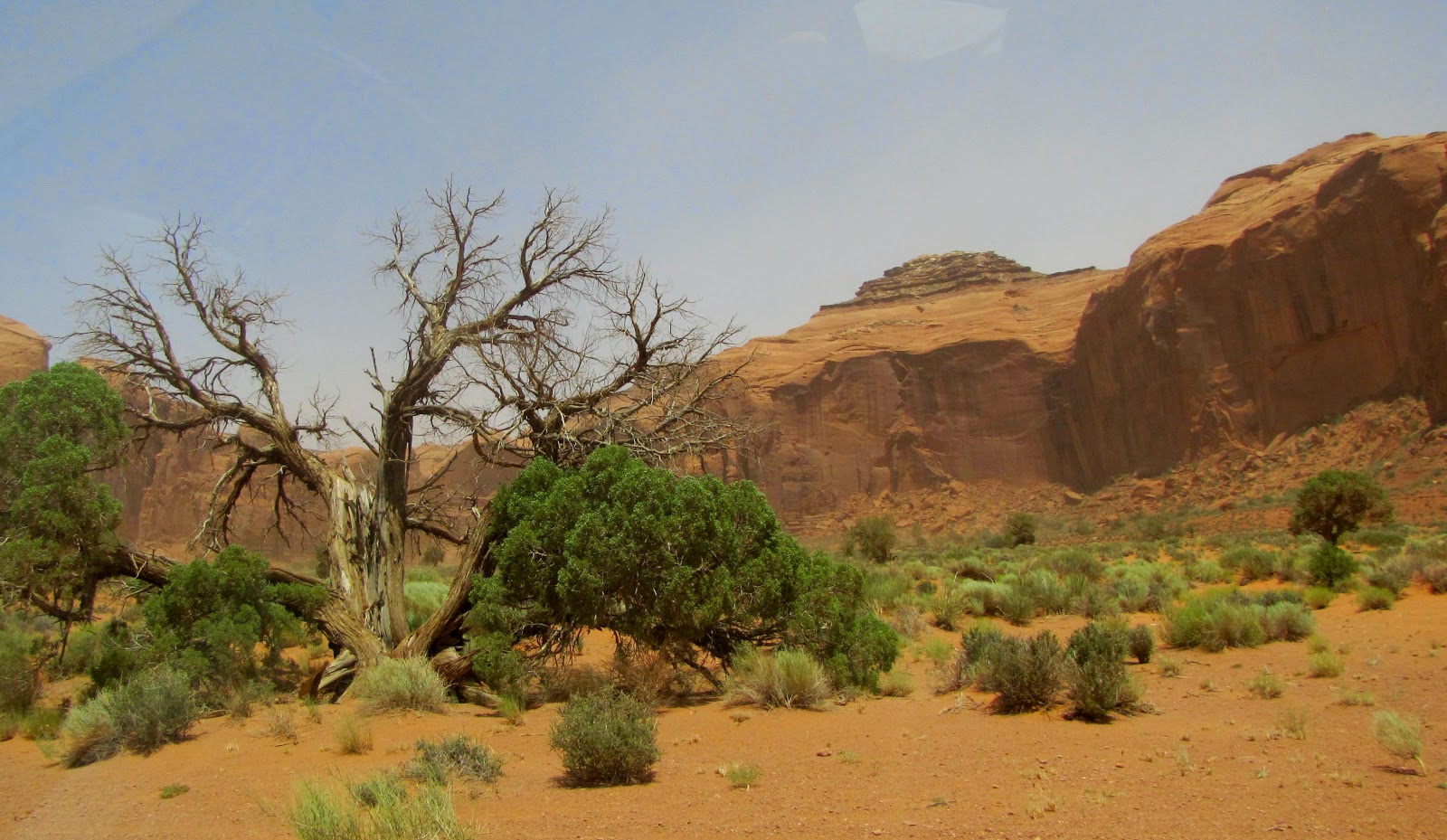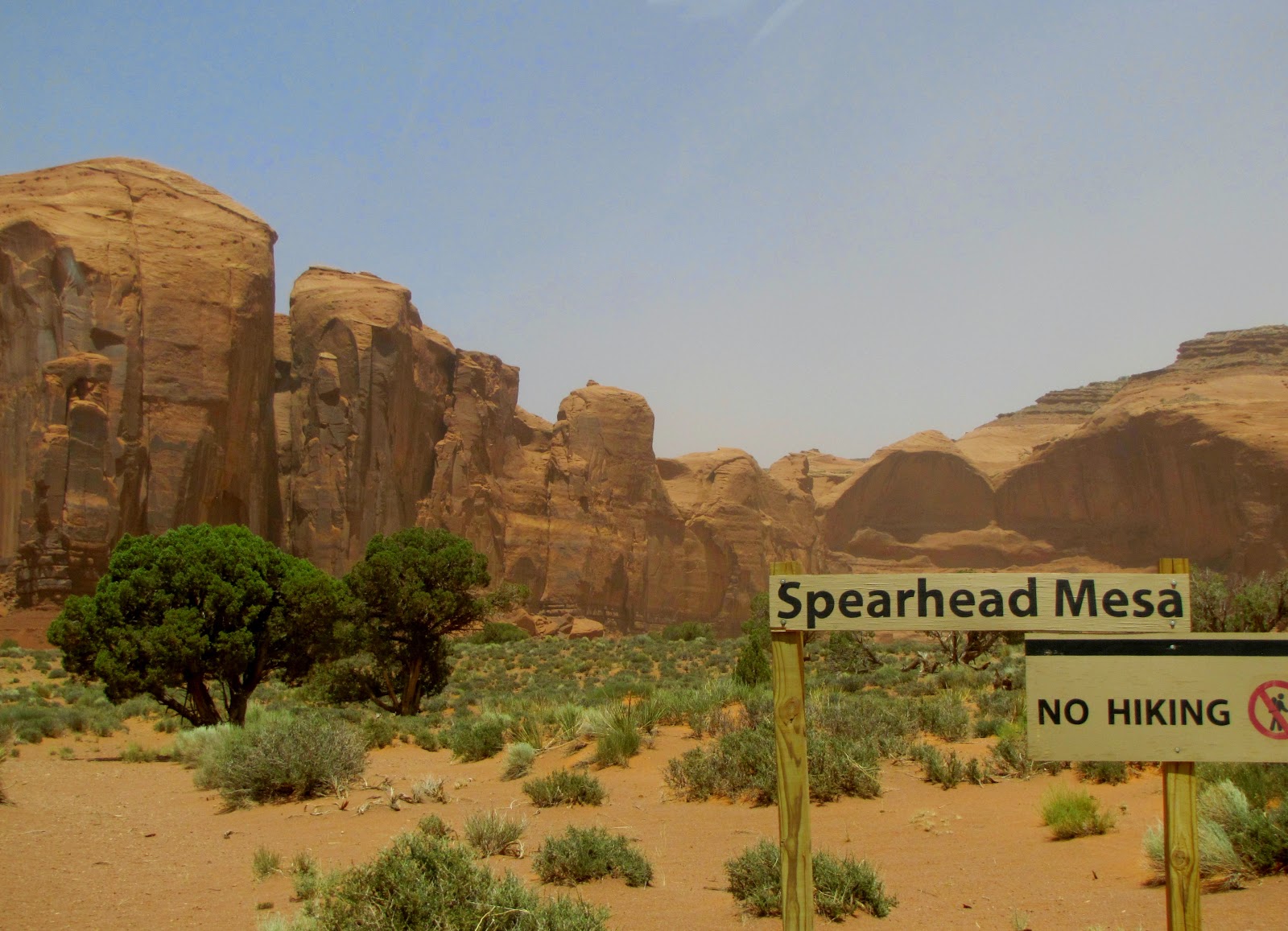The first time I saw Monument Valley was in the movie Stagecoach, John Wayne's first major movie. The director, John Ford, used the same location for many more western movies. In fact, so many movies have been made there, film critic Keith Phipps said that "its five square miles have defined what decades of moviegoers think of when they imagine the American West."
The old fellow who took our entrance fee as we went into the Monument Valley Tribal Park warned us. He said the road through the park was unimproved, had no gas, no bathrooms, no water, and was extremely rough in places. We thought, of course, that he thought we were weaklings and wasn't aware of our experience. We should have listened to him.
Immediately, when we opened our car doors in the parking lot, we were hit with 40-50 mph wind gusts loaded with sand. It felt like hundreds of tiny needles hitting us. We ran to the visitors center's gift shop, where we bought bandannas to cover our faces. Now, I understand why all those movie cowboys wore them. There were three people in front of me in line to pay, and all of them were buying bandannas.
We could see a lot from the visitor's center, but we were determined to drive through the valley. The road was 17 miles and it took about two hours to drive it. We rarely got above five miles per hour. We were not quite as experienced as we thought.
Elephant Butte.
Three Sisters.
Can you see the camel? It was easy to see from some angles. Yes, that is dust at the bottom.
The Hub almost got lost in the dust storm.
Twice, we literally got stuck in the sand piled in the ruts in the road. Hub was able to move the car backwards until we could get around the worst of it.
I wonder how many dust storms this old pinon pine has seen?
The valley is so eerily beautiful, it feels like you have been transported to another world. Enjoy the photos, and excuse me while I go dig some more sand out of my ears.
The old fellow who took our entrance fee as we went into the Monument Valley Tribal Park warned us. He said the road through the park was unimproved, had no gas, no bathrooms, no water, and was extremely rough in places. We thought, of course, that he thought we were weaklings and wasn't aware of our experience. We should have listened to him.
Immediately, when we opened our car doors in the parking lot, we were hit with 40-50 mph wind gusts loaded with sand. It felt like hundreds of tiny needles hitting us. We ran to the visitors center's gift shop, where we bought bandannas to cover our faces. Now, I understand why all those movie cowboys wore them. There were three people in front of me in line to pay, and all of them were buying bandannas.
We could see a lot from the visitor's center, but we were determined to drive through the valley. The road was 17 miles and it took about two hours to drive it. We rarely got above five miles per hour. We were not quite as experienced as we thought.
Elephant Butte.
Three Sisters.
Can you see the camel? It was easy to see from some angles. Yes, that is dust at the bottom.
The Hub almost got lost in the dust storm.
Twice, we literally got stuck in the sand piled in the ruts in the road. Hub was able to move the car backwards until we could get around the worst of it.
I wonder how many dust storms this old pinon pine has seen?
The valley is so eerily beautiful, it feels like you have been transported to another world. Enjoy the photos, and excuse me while I go dig some more sand out of my ears.




















Comments
Post a Comment